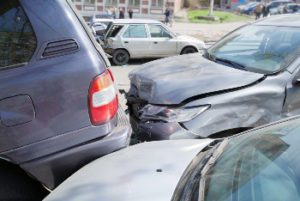 Fault in a car crash can be complex to determine. Depending on the type of accident, fault can be in dispute between two or more drivers. It can be hard to discern which driver is to blame if law enforcement receives different stories from the individuals involved in the accident.
Fault in a car crash can be complex to determine. Depending on the type of accident, fault can be in dispute between two or more drivers. It can be hard to discern which driver is to blame if law enforcement receives different stories from the individuals involved in the accident.
Crashes involving multiple vehicles can be more complicated than a standard two-car collision, since several different factors may come into play when determining which driver (or drivers) are to blame. If you are a driver in Texas who was recently involved in such a collision and want to know how fault is determined in this situation, take a look at the information below before speaking with an experienced car accident attorney.
Common Causes of Accidents Involving Multiple Cars
Automotive accidents in Texas are not uncommon, especially in densely populated and urban areas. Collisions that involve multiple vehicles frequently occur during mid-day traffic, but there can be other reasons that an accident may occur, including:
- Failing to yield when changing lanes
- Using a phone or not focusing on the road
- Failing to stop at a stop sign or red light
- Stopping short or breaking suddenly
- Following too closely behind another vehicle
- Failing to yield to pedestrians
- Not using a turn signal
Car accidents involving multiple vehicles can result in serious injury for all parties, even the at-fault driver. All it takes is one driver to slam on their brakes to create a chain-reaction of cars colliding into each other.
Steps to Take Following a Texas Multi-Car Accident
Once a collision occurs, it can be difficult to know what to do next. However, it is important to ensure that you take a few specific steps following an accident, especially if you plan on filing a case and taking it to court.
- Call paramedics: Accidents that involve multiple vehicles can be deadly, especially on busy roads in Texas. After a crash, be sure to request medical services for any injured drivers by dialing 9-1-1. Police officers who arrive on the scene may also be able to assist you with this.
- Gather evidence: Take photos and videos of the scene, which includes images of each car involved in the accident and the damage that their vehicles sustained, as well as any debris or clutter on the road that may have led to the incident.
- Take witness testimonies: If there are any bystanders near the road at the time of the collision, speak with them and gather their contact information. Ask them to recount the crash from their perspective and record their words on video or by writing them down. Their statement may be useful in court and can help to discern the actual events of the crash, rather than what the drivers experienced from behind the wheel.
- Report the accident to your insurance company: Chain-reaction accidents are dangerous and can result in serious damage to property and your vehicle. Once the dust has settled after the crash, be sure to notify your insurance company and provide them with any photos, videos, or official reports that you may have from the incident.
The most important rule after a collision involving multiple vehicles is to remain calm. You may be worried about the state of your car or you may feel frustrated with the person who caused the accident but panicking and becoming angry with any of the other drivers can make matters worse.
Determining Fault in a Chain-Reaction Car Crash in Texas
Understanding who was at fault is not always clear after a multiple-car accident in Texas. Although circumstances may vary, there are generally a few different scenarios in which fault is determined for chain-reaction car accidents:
- Breach of Duty of Care: Drivers have a responsibility to be mindful of their surroundings and other vehicles while on the road, and to violate this duty of care through either action or inaction can cause an individual to be legally at fault for an accident.
- Cause in Fact: If a lawyer can prove that a driver’s direct actions are the cause of the crash, they will be found at fault.
- Proximate Cause: If the damages sustained during the accident were preventable or foreseeable, an individual might be at fault.
Being at fault means you’re responsible for paying the damages of other people involved in the accident. These include costs for medical bills, injuries, lost wages, and more. An experienced lawyer gets to the bottom of who is at fault, so you understand your rights and options.
Contact an Expert Car Accident Lawyer in Texas
Car accidents are challenging, especially if you or someone you love has been injured as a result of the crash. Whether you are looking to seek damages or are being convicted as the individual at fault, you need a trusted lawyer by your side to ensure that your rights are protected.
If you’re ready to move forward with your case, the law office of Sutliff & Stout can help. Our team of trained car accident lawyers can help give you peace of mind and build a winning defense strategy. For a free consultation, call 713-987-7111 or contact us online.





 (713) 405-1263
(713) 405-1263  550 Post Oak Blvd, Suite 530
550 Post Oak Blvd, Suite 530